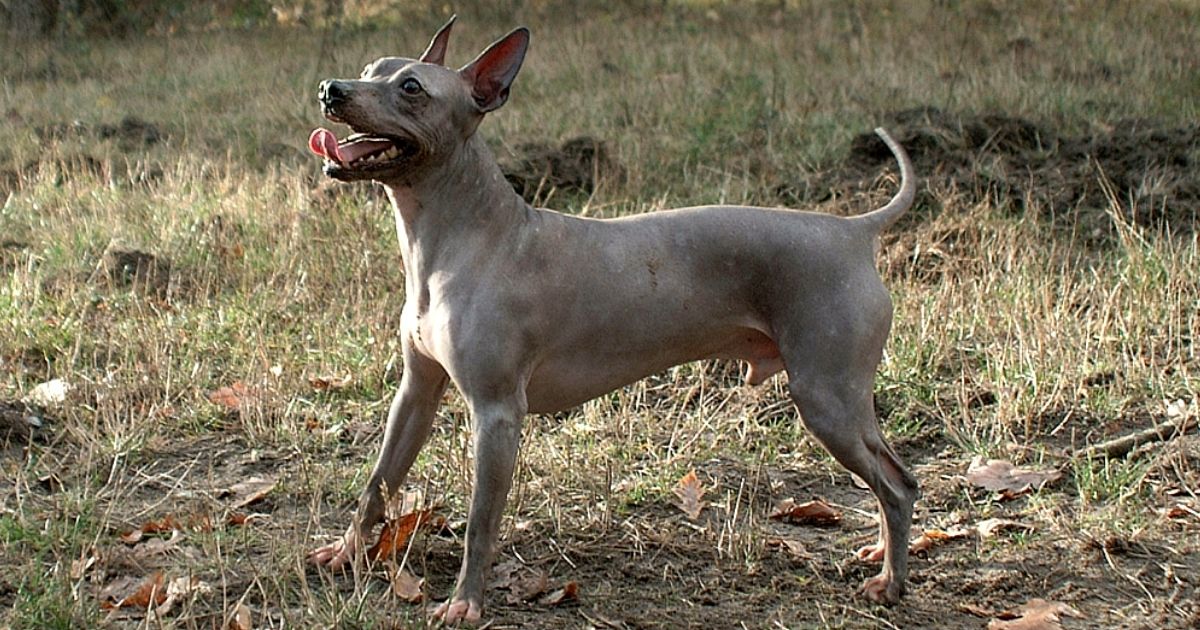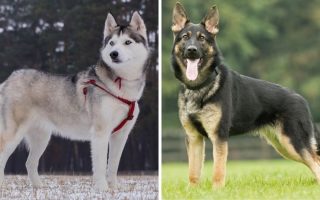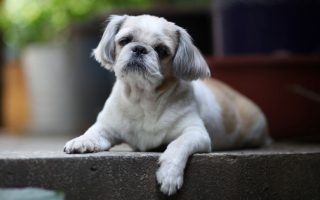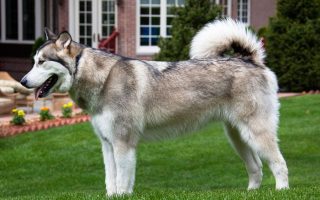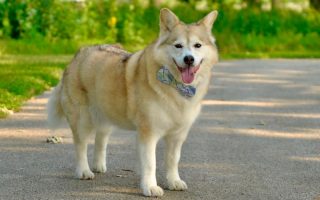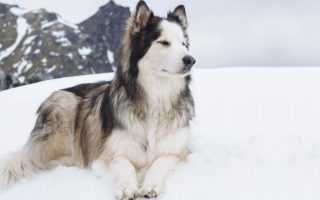If you’ve ever imagined what a dog would look like without hair, the American Hairless Terrier dog breed is a real-life example of such.
Their physical trait is neither a sign of illness nor a horror movie gimmick. The American Hairless Terrier got its name because of the lack of hair on the skin.
If you love the unusual, the American Hairless Terrier puts an uppercase ‘U’ to that word.
That aside, the Hairless Terrier is a normal dog with needs, good qualities, and challenges. While some additional measures are peculiar to this breed, there is nothing strange about them.
This article on American Hairless Terrier facts and information takes an in-depth look at characteristics, behavior, temperament, health, care needs, training, and more.
American Hairless Terrier Facts and Information
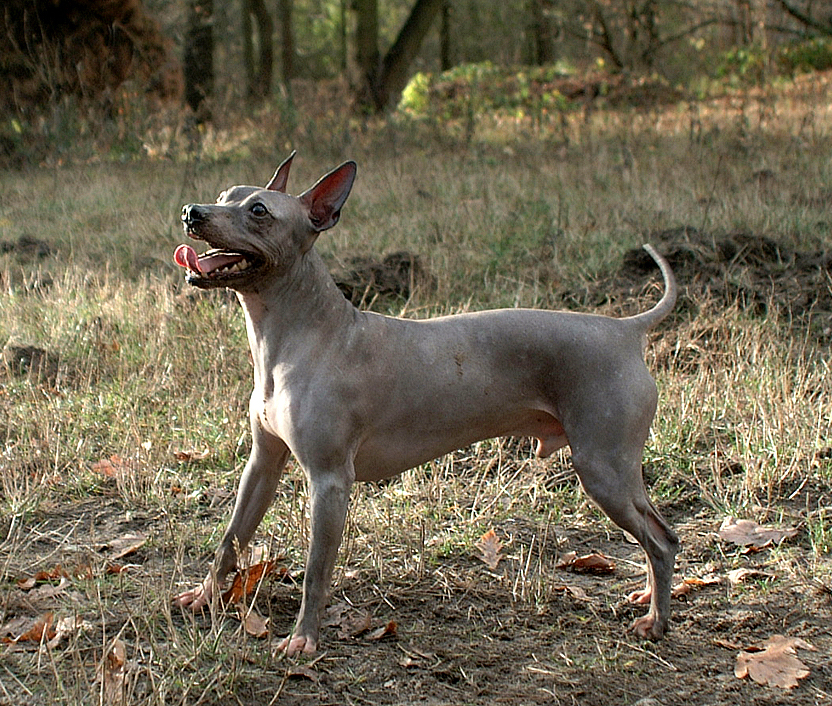
| Dog Breed Group | Terrier Dogs |
| Height | 12 to 16 inches |
| Weight | 10 to 16 pounds |
| Coat | Hairless, short |
| Color(s) | Pink, gray, gold, red, black |
| Life Expectancy | 13 – 16 years |
| Temperament / Behavior | Intelligent, curious, spunky |
| Origin | United States |
| Bred For | Hunting rats, vermin |
| Nickname(s) / Other Name(s) | the AHT |
| Recognized by the AKC, ANKC, CKC | Yes |
American Hairless Terrier Characteristics
- Adaptability: The Hairless Terrier is suitable for apartment living.
- Friendliness: The Hairless Terrier is friendly, but bonds with one member the most.
- Kid-Friendly: American Hairless Terriers are good with children, especially those they grew it.
- Pet-Friendly: Hairless Terriers are good with dogs but their high prey drive may make them unsuitable for other pets.
- General Health: They are healthy breeds with minimal health conditions.
- Grooming Needs: Grooming is easy.
- Trainability: Training is fairly easy.
- Intelligence: The Hairless Terrier is a very intelligent breed.
- Playfulness: Good for active people—they like to play.
- Exercise Needs: Though an indoor pet, they need regular exercise.
- Energy Level: They have high energy level.
- Tendency to Bark: The American Hairless Terrier barks sometimes and can be taught not to go overboard.
- Tendency to Drool: They hardly drool.
- Tendency to Snore: They hardly snore.
- Tendency to Dig: Like other Terriers, the American Hairless Terrier likes to dig.
Interesting facts about American Hairless Terrier Dog Breeds
Fact #1: The American Hairless Terrier comes with no hair
The American Hairless Terrier has a distinct look. It may be shocking to see them, at first.
Staring at them is almost like looking at someone’s nakedness. In the United States, the Hairless Terrier is the only indigenous hairless dog breed.
Fact #2: They were created by accident
History records that breeders of the Hairless Terrier did not set out to create this breed.
What started as an abnormally in the direct ancestor of this breed—the Rat Terrier—laid the foundation for the breeding of the Hairless Terrier.
This breed is a canine definition of a blessing in disguise.
Fact #3: They are hypoallergenic
Because they come with no fur, Hairless Terriers are hypoallergenic.
Allergic people will enjoy this breed as they won’t provoke any reaction from their owners.
Shedding is low with this breed. However, bear in mind that there’s no perfect hypoallergenic dog. The Hairless Terrier comes close, though.
Fact #4: There are two types of American Hairless Terrier
While most people know of the ‘naked’ Hairless Terrier, they come in two types, regarded as variations of the same breed.
While one is completely hairless, the other has a short coat. The latter type was a deliberate act of breeders.
Fact #5: They are new
Unlike many other dog breeds and Terriers who can trace their history to past centuries and civilizations, the American Hairless Terrier is a new breed.
They were bred in the late 20th century and didn’t get any Kennel Club recognition till our century. This contributes to their rarity.
American Hairless Terrier History & Origin
The American Hairless Terrier was something of a breeding ‘miracle’.
His ancestor, the Rat Terrier, was well known in the United States, and even President Roosevelt got fascinated by them.
In 1972, an abnormally occurred in the litter of Rat Terriers owned by Edwin and Willie Scott.
Amongst their Rat Terrier puppies, they discovered one with no hair. They named her Josephine.
No doubt fascinated by the uniqueness of Josephine, the Scotts began to breed her. Another hairless puppy came from Josephine named Gypsy.
In 1981, after years of producing ‘normal’ Rat Terriers, Josephine gave birth to two hairless puppies.
These puppies became the direct ancestors of what we now know as the American Hairless Terrier. In 1983, the American Hairless Terrier was developed.
At first, they were seen as a variety of the Rat Terrier breed, because they looked similar except for the hair difference.
When the Rat Terrier was recognized by the United Kennel Club in 1999, the American Hairless Terrier was registered as a variety. Through the intervention of the Scotts, this changed.
First, the breeders formed the American Hairless Terrier Association with the goal of making the American Hairless Terrier a breed of its own.
This officially became a success in 2004 when the United Kennel Club recognized the American Hairless Terrier as a breed. Twelve years later, the American Kennel Club recognized them.
American Hairless Terrier Temperament, Behavior and Intelligence
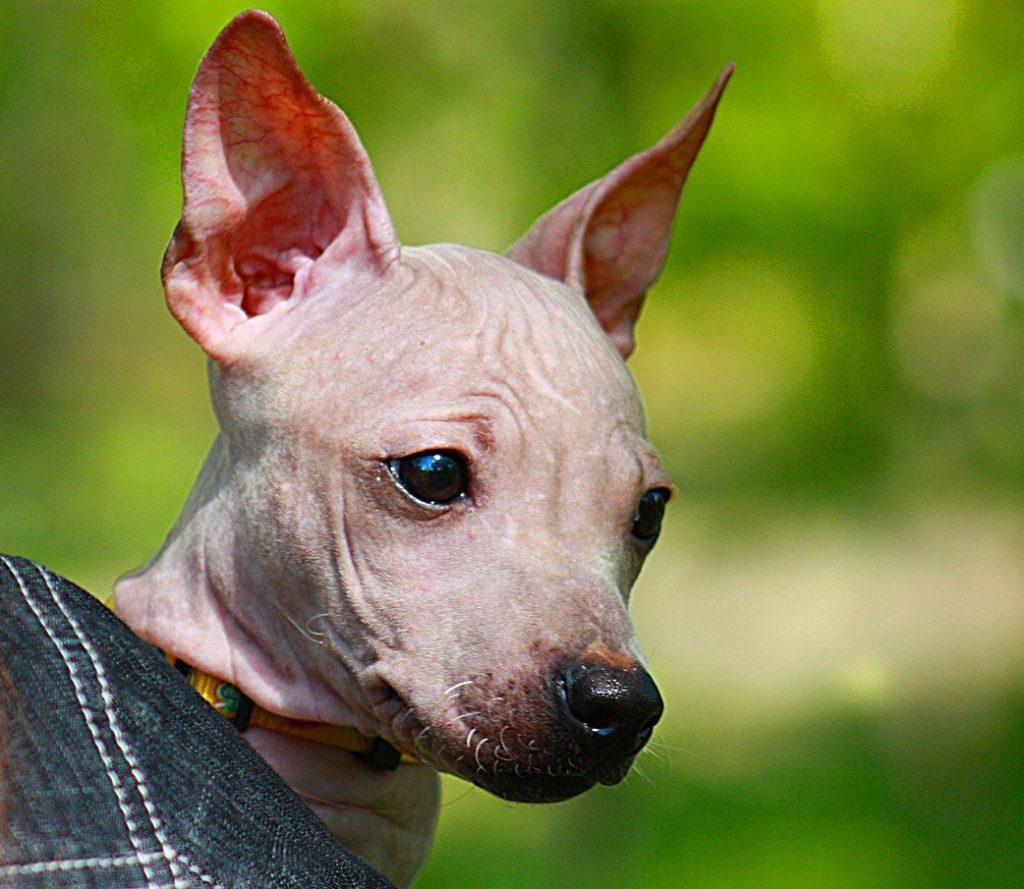
The American Hairless Terrier may be a small dog, but he has the heart of a Terrier.
That means energy, smartness, curiosity, and some spunk to make a full Terrier package.
An inquisitive dog breed, the American Hairless Terrier loves to know what’s going on around him. He can make a good watchdog.
The Hairless Terrier loves to please their owners, though there’s the occasional stubbornness to look out for.
They are as cunning as they are intelligent, so don’t be surprised if your AHT tries to find his way around a rule.
The Hairless Terrier is a sucker for companionship. Though he loves exercise, he’s also a cuddler.
Hairless Terriers are not the dogs you leave outside for long. They don’t take isolation well.
The Hairless Terrier loves to bond with a particular member of the family and treat that person as a favorite.
It is often the person who is in charge of their well-being. If that’s you, prepare to have a constant shadow.
Another trait about the Hairless Terrier is their courage. What they lack in size, they make up in bravery.
It seems the American Hairless Terrier doesn’t know he’s a small dog. They may try to take on a bigger dog if you don’t stop them.
Are American Hairless Terriers good family dogs?
Terrier dogs tend to be hunters, but the American Hairless Terrier seldom goes to the woods. Instead, he likes to stay around his owner—when he’s not exercising. American Hairless Terrier likes to satisfy their owners and is friendly with people in the family.
One thing you should avoid is them bonding with a particular individual. While this may seem harmless, it may turn out to be a training block as they won’t listen to any other person but their favorite.
Instead, they should be taught to flow with every member of the family.
Fortunately, they fit in any environment. They need exercise, though, and it can be tiring if you’re not an active person.
Are American Hairless Terriers good with kids?
Besides being good companions, American Hairless Terriers are not antagonistic towards children. On the contrary, they are kid-friendly and are suitable for large families.
However, the Hairless Terrier may not be suitable for a family with smaller kids.
The Hairless Terrier is a small dog and may get injured if he is manhandled by anyone.
On the flip side, he can be the aggressor as no dog likes to be roughly handled. It is ideal to have them in a family with older kids who know how to respect a small dog.
Are American Hairless Terriers good with other dogs and pets?
American Hairless Terriers get along well with other dogs if you socialize them. However, because of their high pre-drive, they are not advisable for cats and small pets.
American Hairless Terriers can live with other dogs, but they won’t instantly become BFFs with these canines.
You need enough socialization for them to accept these dogs. The Hairless Terrier can get aggressive when provoked, so be sure all dogs co-operate.
They are not advisable for other pets, though. The Hairless Terrier inherited the strong prey drive of the Rat Terrier and may pose a threat to cats and rodents.
Male vs Female American Hairless Terrier
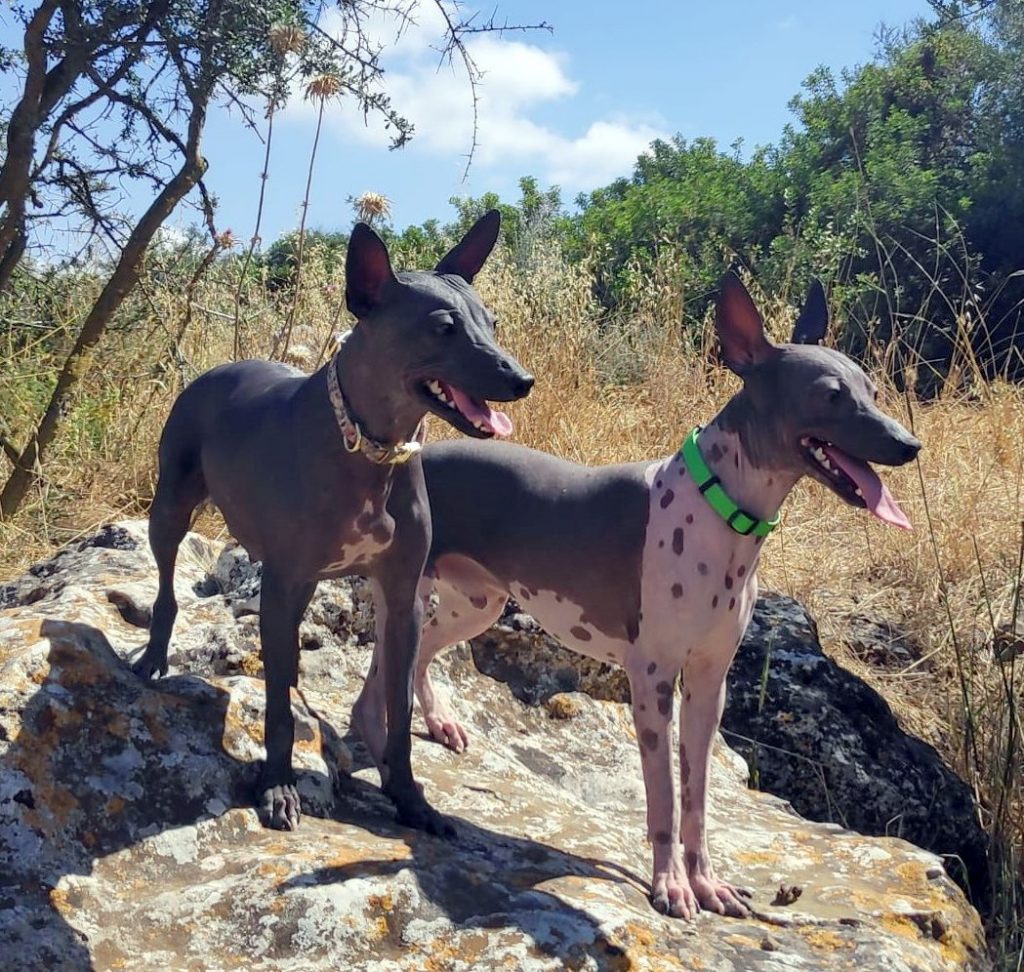
Gender differences exist in the Hairless Terrier, but whether they are enough to make a gender better than the other remains to be said.
Most times, gender is a thing of preference. Some factors may act in favor of either gender, but it still boils down to choice.
The Hairless Terrier male and female share similar sizes. They both weigh 10 to 16 pounds and grow as tall as 12 to 16 inches.
The female Hairless Terrier tends to mature faster than the Males, who retain some puppyhood nature longer than females.
They both behave alike, however, so you may not spot any overt difference.
If you intend to breed or get a mix, the female Hairless Terrier is the one with reproductive quality.
However, this also means they have an estrus cycle, where they go ‘on heat’ once every six months. This can lead to blood stains on your carpet.
If you decide to spay or neuter your American Hairless Terrier, the previous paragraph won’t apply to you.
Spaying or neutering may be the best thing you’d do for your Hairless Terrier. However, it could also have some side effects. Be sure to get your veterinarian’s opinion.
Overall, both male and female Hairless Terrier are good additions to any family.
Caring for an American Hairless Terrier
Caring for a small dog like the Hairless Terrier requires effort, commitment, consistency, and some tough love. While it is convenient to own a Hairless Terrier, it is not a breeze.
The good news about the American Hairless Terrier is, they adapt well to urban dwellings.
People living in an apartment will find the Hairless Terrier a suitable indoor pet who’d keep you company as you go about chores or recline on a couch for some ‘Netflix and chill’.
They aren’t mellow dogs, though. Without exercise, you may come back and meet your house in a mess.
Don’t judge the Hairless Terrier’s exercise needs by his size. As a dog breed from a hunting line, the Hairless Terrier needs regular exercise.
Don’t limit it to the physical, however. Mental activities are required for a clever breed like the Hairless Terrier.
First-time dog owners may not know how to be firm with a small dog like the Hairless Terrier, a situation that should be avoided.
Besides the risk of them developing small dog syndrome, the Hairless Terrier has a Napoleon complex and may want to boss everyone around if given the chance.
Small dogs shouldn’t be indulged, no matter how cute they may seem. The ideal owner for the Hairless Terrier is an experienced, firm person.
The Hairless Terrier also needs to eat well and stay clean. Both are easy with this breed, especially grooming.
You don’t need a vacuum cleaner or a lot of brushing to keep them properly. Normal hygiene is sufficient.
American Hairless Terrier Food and Diet
To feed an American Hairless Terrier, keep in mind that he’s a small dog with high energy. His diet and meal ration should be planned to that effect.
Schedule his mealtime from puppyhood to get him accustomed to routines. It is a form of training.
The adult American Hairless Terrier requires about 1½ to 2½ cups, based on recommendation. It should be fed twice a day.
Free feeding the Hairless Terrier is not advisable because of their tendency to gain weight.
Due to their energy, their diet should contain a good amount of protein. Ensure the protein is of high quality as too many junks pose as protein, these days.
Also, minimize their intake of meals like corn and soy as those offer little nutritional value and pile on pounds.
Puppy Hairless Terriers also need quality protein for growth.
As a general rule, puppies younger than 12 weeks need about 4 cups a day. It lessens as the puppy grows older. Like many other dog breeds, puppy Hairless Terriers eat more than adults.
For senior Hairless Terriers, eating should be kept at a minimum to avoid weight gain which can engender arthritis.
American Hairless Terrier Exercise
As already established, the American Hairless Terrier has high energy and requires everyday exercise for good health, balance, and confidence.
Exercise doesn’t need to be intense, however. It should be enough to keep them fit.
An hour walk remains a go-to exercise for dog owners, and it can satisfy the American Hairless Terrier’s exercise need.
It is best to have them on a leash while you’re strolling with them to prevent losing them. When the weather is hot, get sunscreen to prevent sunburn. During colder weather, keep them wrapped up.
Some off-leash exercise would do them some good, though, so you can let them play in your fenced yard.
This is especially beneficial when you don’t feel like getting exercise of your own.
If you live in an apartment, you can take them to a dog park and let them run around till they use up their energy.
Besides walking and off-leash playtime, spice things up with games your Hairless Terrier will enjoy.
Terriers like to dig, so you can make a game out of this habit. Other games include fetch, frisbee, and mind games.
Puppies and seniors shouldn’t be exercised as much as an adult. Too much can affect both pups and seniors.
While exercising your puppy, start with a simple 10 minutes walk and increase as they grow older. Seniors need a couple of minutes’ walk, as well.
Just as you shouldn’t use the Hairless Terrier’s size to judge his energy level, don’t assume he’s easy to train because of his small size.
The American Hairless Terrier likes to please his owner and is intelligent enough to understand commands.
However, he’s also independent and stubborn, a small dog with a strong spirit that can’t easily be ‘broken’. New dog owners will have a hard time training this breed.
The first step to training an American Hairless Terrier is to mark your position as a leader. This should be done while your Hairless Terrier is a puppy.
Due to their bossy nature, they’d want to test boundaries. Don’t be surprised when your Hairless Terrier tries to nibble what you tell him not to bite. They need firm leadership.
Do not make the mistake of spoiling a Hairless Terrier, or indulging them. You shouldn’t let them do what you wouldn’t want a big dog to do.
Spoiling a small dog leads to small dog syndrome. At this point, your pet displays bad habits and may even be aggressive.
Do not be harsh on them, either. Learn to draw the line between firmness and harshness, or you would make your pet antagonistic.
Gentle rebukes and positive reinforcements go a long way.
American Hairless Terrier Grooming Needs
This is the easiest part of pet parenting the American Hairless Terrier. Both the coated and hairless variation of this breed rarely sheds.
That means no long hours vacuuming, brushing, or having to hire a groomer to do the job. If you don’t fancy grooming, this breed is good for you.
Of course, there’s a downside to the hairless characteristic of this breed. With nothing to protect them from the weather, the Hairless Terrier is vulnerable to both summer, winter, and everything in between.
When the sun is up, get some sunscreen to protect them from sunburn. During the cold times, wrap them up in warm clothing.
Brushing and bathing are both minimal with this breed. Brushing is only needed for the coated type, and a once-over is sufficient. Only bathe this breed when they get too dirty.
Oral health care is non-negotiable. Learn to brush their teeth on a regular basis to prevent the pain (and expenses) that come with tooth decay.
Also, trim their nails before they get too long and wipe their ears.
Set the foundation for grooming when your Hairless Terrier is a puppy.
Not only is this a fun moment for them, but it also gets them used to being touched. Veterinarians would appreciate this training.
American Hairless Terrier Health Conditions
Caring for your Hairless Terrier would help maintain his health. This breed is healthy, to an extent. Negligent treatment can affect the American Hairless Terrier’s health.
There are some medical conditions that can affect your Hairless Terrier. Some of them are life-threatening. Others are less serious, but a concern too.
A couple of the health conditions that affect the Hairless Terrier include the following.
Cushing’s Disease
When a dog’s adrenal gland produces a surplus of hormones, it leads to Cushing’s Disease.
Cushing’s Disease is the overproduction of cortisol in a dog. It affects older dogs more.
It is often difficult for a vet to diagnose, so giving accurate answers about symptoms help. Symptoms include excessive urinating, hair loss, continuous thirst, tiredness, and skin infections.
Legg-Calve Parthes Disease
Legg-Calve Parthes Disease is the degeneration of the femur. With time, it leads to arthritis due to the breaking down of the hips. Though different theories have been suggested, the exact cause remains unknown.
The major sign of this disease is limping. A dog suffering from this will find it difficult to place weight on the affected leg. Further retrogression leads to lameness.
Hypothyroidism
Hypothyroidism affects the organic process of an affected dog. It is an abnormal condition of the thyroid gland.
Located at the dog’s neck, the thyroid gland produces the thyroxine hormone and some others. When the dog’s body isn’t producing enough, it leads to hypothyroidism.
Symptoms include dullness, fatigue, obesity, hair loss, and reluctance to exercise.
Patellar Luxation
Patellar Luxation is another leg condition that occurs when the kneecap dislocates from its normal position. It is one of the main causes of lameness in dogs.
When a dog suffers from Patellar Luxation, owners would notice the dog running sometimes on three legs as opposed to four.
Skin cancer
A disadvantage of being hairless is that the American Hairless Terrier is vulnerable to skin cancer.
Skin cancer takes many forms, and they are all serious conditions. Exposure to sunlight is the leading cause of skin cancer.
If you need more reasons to get sunscreen for your Hairless Terrier, this is one.
Symptoms include scabs, bumps on the skin, rashes, and even ulcers.
FAQs
What are American Hairless Terriers known for?
It is not unusual for a passerby to have a double-take at the sight of the American Hairless Terrier. A rare breed, the American Hairless Terrier stands out from other dog breeds because of their unique skin. They are known for being without hair, or a short coat.
How big do American Hairless Terriers get?
American Hairless Terriers are small dogs. A full-grown Hairless Terrier weighs between 10 to 16 pounds and grows as tall as 12 to 16 inches.
Do Hairless Terriers like to cuddle?
The American Hairless Terrier is an energetic breed that likes regular exercise. That said, they do enjoy the indoors and like to cuddle with their owners.
Is it hard to train and care for American Hairless Terriers?
While training is challenging with this small but stubborn breed, every other aspect of dog care is easy. You don’t need much effort to groom, feed or even exercise the American Hairless Terrier. It is not hard to take care of them.
How long do American Hairless Terriers live?
American Hairless Terrier has a long life span, especially in the hands of a good pet parent. They live as long as 13 to 16 years.
How much do American Hairless Terrier puppies cost?
Due to their rarity and the fact that they are new, the American Hairless Terrier is somewhat costly. A quality puppy costs around $800 to $1,500.
Do American Hairless Terrier have hair?
The American Hairless Terrier is the only hairless dog in the United States. Their distinct feature is the absence of hair on their skin.
Does American Hairless Terrier shed?
The American Hairless Terrier is good for people with allergies because they hardly shed. They are also suitable for those who don’t want to deal with dog fur.
What is a major concern for owners of the American Hairless Terrier?
Because of their unique hairless body, the American Hairless Terrier is prone to sunburn and skin cancer. They are also not suitable for harsh weather. A major concern of owners of the American Hairless Terrier is keeping his skin protected.
What does American Hairless Terrier prey on?
Though they seldom hunt, the American Hairless Terrier has a high prey drive. Like their fathers the Rat Terrier, they tend to prey on rodents.
Is the Hairless Terrier right for you?
The American Hairless Terrier has a lot of family-friendly qualities that make this breed right for you if you can meet the conditions. Not only do they flow with everyone in the family, but they also adapt to different environments.
They also act as watchdogs and are good companions. They do come with challenges to be overcome, but they are good for many households.
Wrap Up
Hopefully, these American Hairless Terrier facts and information is not only useful but will also help you decide if this dog breed is right for your home.
The Hairless Terrier is a fascinating, rare dog breed that may take some getting used to, especially if you’ve never owned a dog that looks bare.
Besides adapting to the absence of usual dog hair, the Hairless Terrier has to be protected more than many other dog breeds.
This dog isn’t fragile, however. With them, prepare for an adventure. Be sure to pack sunscreen and be set for the ride.
Related: Complete Alphabetical List of Dog Breeds
Helpful Resource:
Official Profiles — American Hairless Terrier Dog Breed Information:

